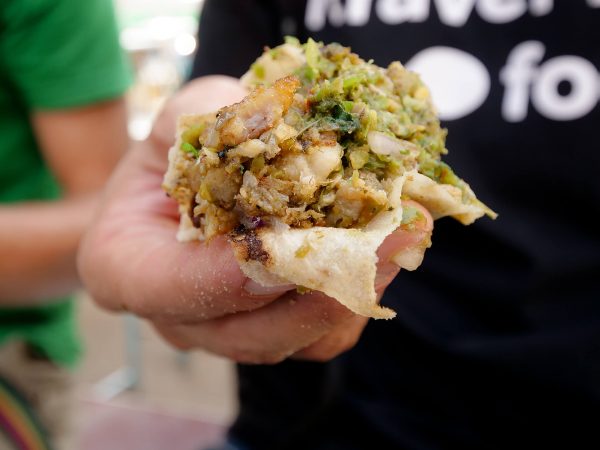
It’s a version of flat-bread that originated in the Indian Subcontinent and was brought to East Africa by trade. The African-ized version of chapatis are special, a treat that’s different from the normal ugali cornmeal staple eaten at most meals. A chapati is often accompanied by beans, cooked green vegetables, or else just wadded up plain with a cup of chai (tea).

Driving through Morogoro, Tanzania, I stopped for a quick break to grab a cup of chai. Mama Chapati was sitting at the base of a pharmacy cooking her chapatis, a giant syringe painted on the wall behind her.
The aroma of the sizzling chapatis on the skillet was irresistible (fresh things like this are meant to be eaten immediately).

Get exclusive updates
Enter your email and I’ll send you the best travel food content.
East African chapatis are made with a flour dough that is delicately coiled into a ball. When the chapati is rolled out, the coil makes the chapati flaky from within. It is then fried on a heavy iron pan, roasting slowly over a light bed of charcoal.
When the chapati is nearly finished cooking, a ladle of of oil is sprinkled around the edges of the pan, crispy-fying the outer layer and giving it that truly African touch.

If cooked right, the result of an African chapati is characterized by a flaky moist interior and a crispy browned outer shell.
Mama Chapati made them flawlessly.

Throughout the mid-morning, people came to the pharmacy, not to buy drugs, but to get a famous chapati for takeaway.

I bid farewell, expressed my gratitude for the deliciousness, and returned back to the road heading towards Dar es Salaam.
Get exclusive updates
Enter your email and I'll send you the best travel food content.



